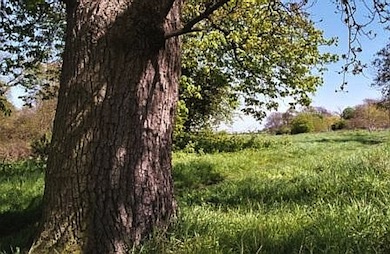The southern parts of the park, either side of Pyl Brook, with old trees in meadowland, and areas of woodland.
Local Wildlife Site
Accessible Sites of Importance for Nature Conservation
Morden Park
Borough: Merton
Grade: Borough Grade I
Access: Free public access (all/most of site)
Area: 67.12 ha
Description
Wildlife
This site includes the more natural parts of the park which lie either side of the Pyl Brook and extend up the London Clay hill slopes to the north. The grassland on these slopes was allowed to grow long in the 1970s so that people could enjoy the wild flowers in the spring and summer, one of the very first such changes made to a park in London. Here there is a good range of butterflies to be seen in the summer. The site also holds many old oaks (Quercus robur), which probably date from before the establishment of the park some two hundred years ago, and which provide excellent wildlife habitat. There are also several small areas of woodland, some of which are to be enhanced as part of the Capital Woodlands project. The brook has some valuable associated wetland habitats, in one of which is found the sharp-flowered rush (Juncus acutiflora) which is uncommon in London. There is considerable potential to develop further wetlands in the valley of the brook. Most of the site is a Local Nature Reserve and it includes a scheduled ancient monument, Morden Park Mound. In the north of the park, to the south of the old tennis courts, is an area of meadow which has some of the hallmarks of old grassland with meadow barley (Hordeum secalinum) and crested dog's-tail (Cynosurus cristatus), together with a variety of wild flowers, Also to be found in this part of Morden Park is an area of secondary woodland west of the sports complex, and a pond within the sports ground which holds a population of the specially-protected great crested newt.
Morden Park © Mathew Frith

Mature oak in Morden Park © Ian Yarham
Feedback
Have a question or a comment for this site, or notice anything missing or out of date? Please contact us.
